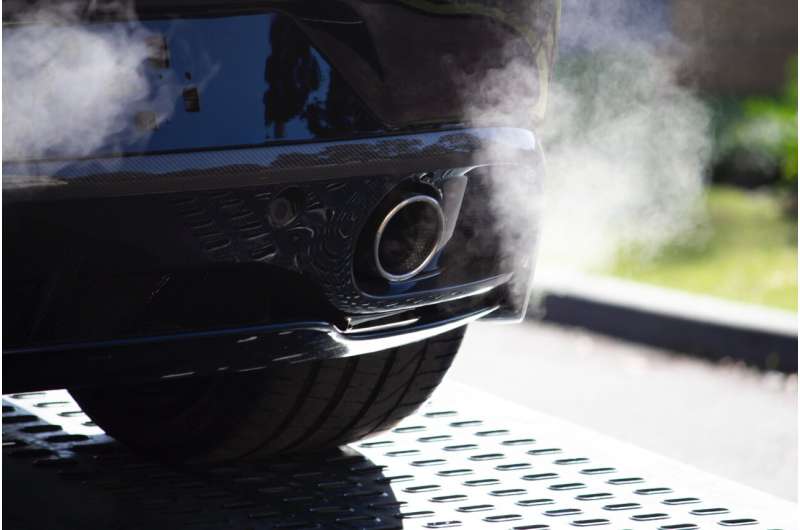Filtered car emissions still turn toxic after sunlight exposure, study reveals

Table of Contents

A new international study led by Helmholtz Munich and the University of Rostock reveals that emissions from modern gasoline cars—despite meeting the currently strictest European emission standards EURO 6d—can become significantly more harmful after being released into the atmosphere. The findings, published in Science Advances, challenge the assumption that filtered exhaust from EURO 6d-compliant vehicles is inherently safe.
The research focused on a gasoline vehicle equipped with a gasoline particulate filter (GPF), designed to drastically reduce primary particulate emissions. Freshly emitted exhaust showed no detectable cytotoxic effects on human lung cells. However, once the exhaust underwent “photochemical aging”—a natural transformation process driven by sunlight and atmospheric oxidants—it became substantially more toxic.
The aged emissions caused notable DNA damage and oxidative stress in both cancerous alveolar and normal bronchial epithelial cells. This toxicity was not only associated with newly formed particles, known as secondary organic and inorganic aerosols (SOA and SIA), but also with oxygenated volatile compounds, such as carbonyls, generated during their residence in the atmosphere.
Lab-based emission standards overlook atmospheric transformation
According to Dr. Mathilde Delaval, first author of the study and researcher at Helmholtz Munich, these findings point to a critical shortfall in current vehicle emissions testing and regulation.
While EURO 6d standards ensure low emissions at the tailpipe, they do not account for the chemical transformations those emissions undergo once released into the environment. “Our study shows that we are missing a big part of the picture by not considering how exhaust gases change—and become more harmful—after they leave the car,” she said.
The results have important implications for how air quality standards are set and monitored. Current regulations focus primarily on the emissions measured directly after combustion, without factoring in how these emissions interact with sunlight and atmospheric chemicals to form new, more harmful pollutants.
“There’s a clear disconnect between how we test vehicle emissions in the lab and how those emissions behave in the real world,” said co-author Dr. Hendryk Czech from Helmholtz Munich and the University of Rostock. “If we ignore what happens to exhaust after it enters the atmosphere, we risk underestimating the true health impact of traffic-related air pollution.”
Atmospheric aging demands an updated approach to pollution control
Air pollution remains a major global health issue, responsible for increased rates of respiratory and cardiovascular disease, cancer, and premature death. The discovery that filtered emissions from even the cleanest gasoline cars can still become toxic once airborne suggests that future regulations must evolve to address both primary and secondary pollutants.
This study was a joint effort by a multidisciplinary team of biologists, aerosol physicists, and chemists investigating the health impacts of air pollution.
Together, these researchers deliver a clear and urgent message: regulating tailpipe emissions is no longer enough. To truly protect public health, emission standards must also account for how exhaust gases evolve—and become more toxic—once released into the atmosphere.
More information:
Mathilde N. Delaval et al, The efficiency of EURO 6d car particulate filters is compromised by atmospheric aging: In vitro toxicity of gasoline car exhaust, Science Advances (2025). DOI: 10.1126/sciadv.adq2348
Citation:
Filtered car emissions still turn toxic after sunlight exposure, study reveals (2025, May 28)
retrieved 28 May 2025
from https://phys.org/news/2025-05-filtered-car-emissions-toxic-sunlight.html
This document is subject to copyright. Apart from any fair dealing for the purpose of private study or research, no
part may be reproduced without the written permission. The content is provided for information purposes only.
If you liked the article, do not forget to share it with your friends. Follow us on Google News too, click on the star and choose us from your favorites.
If you want to read more Like this articles, you can visit our Science category.